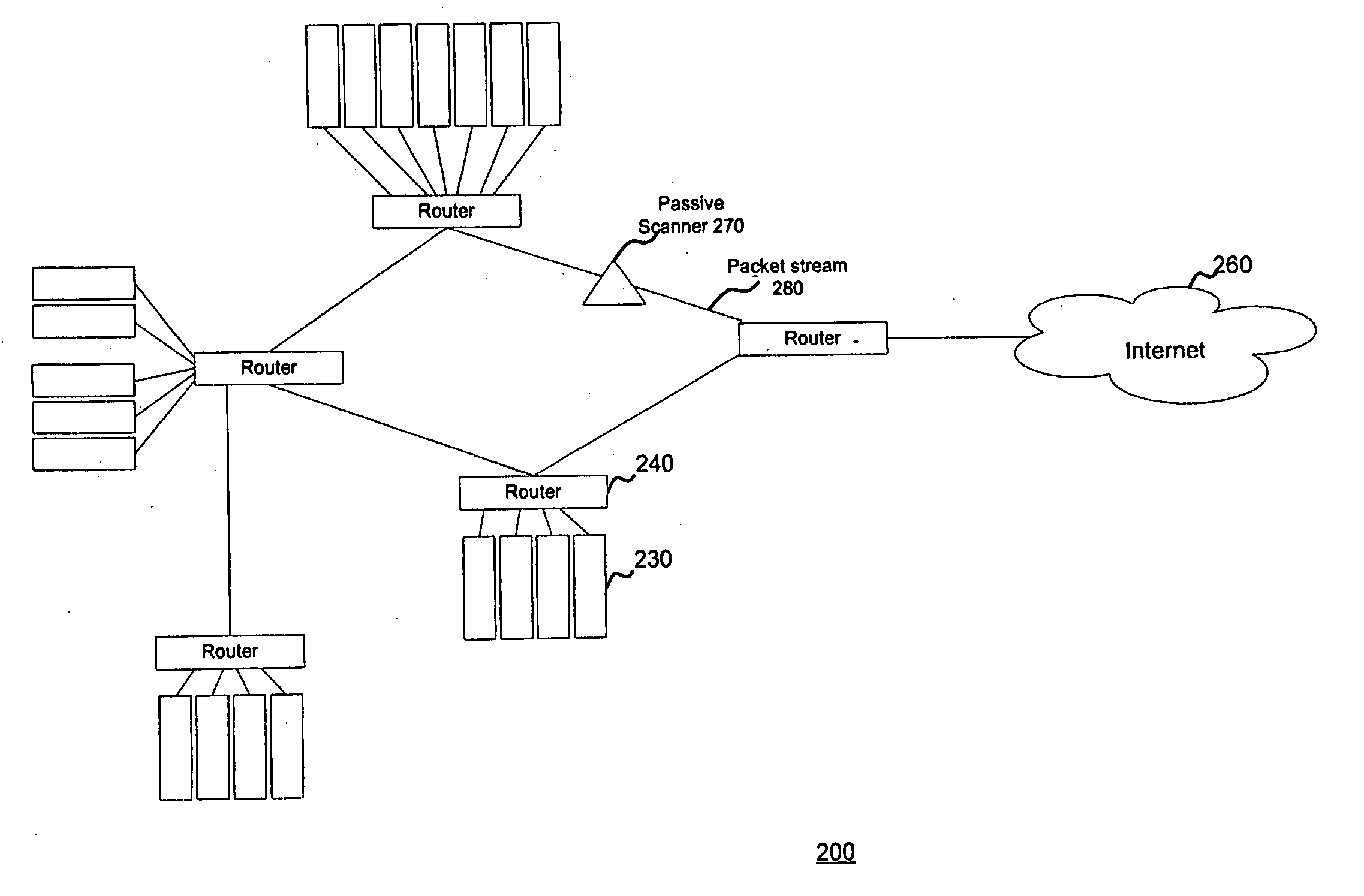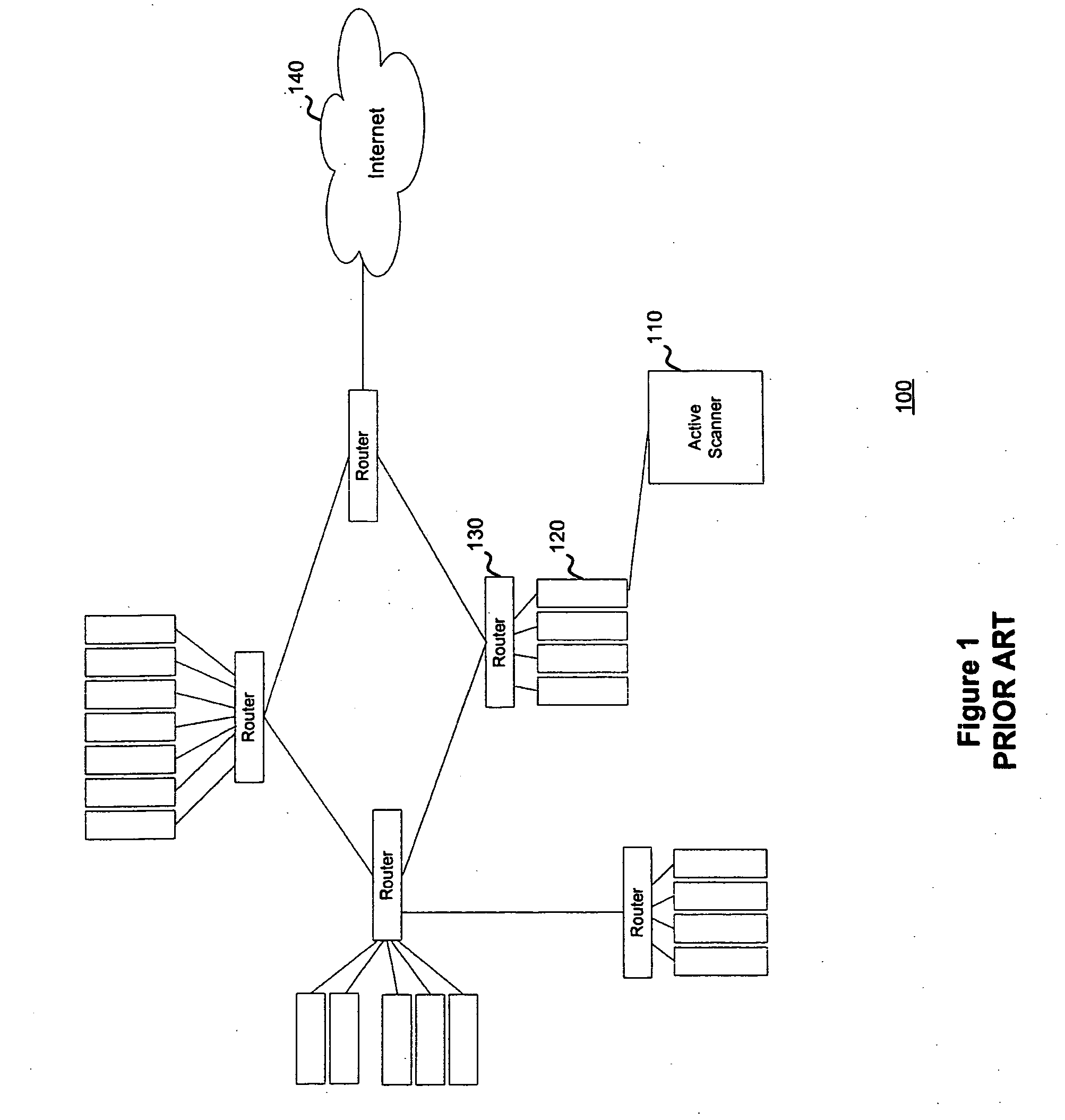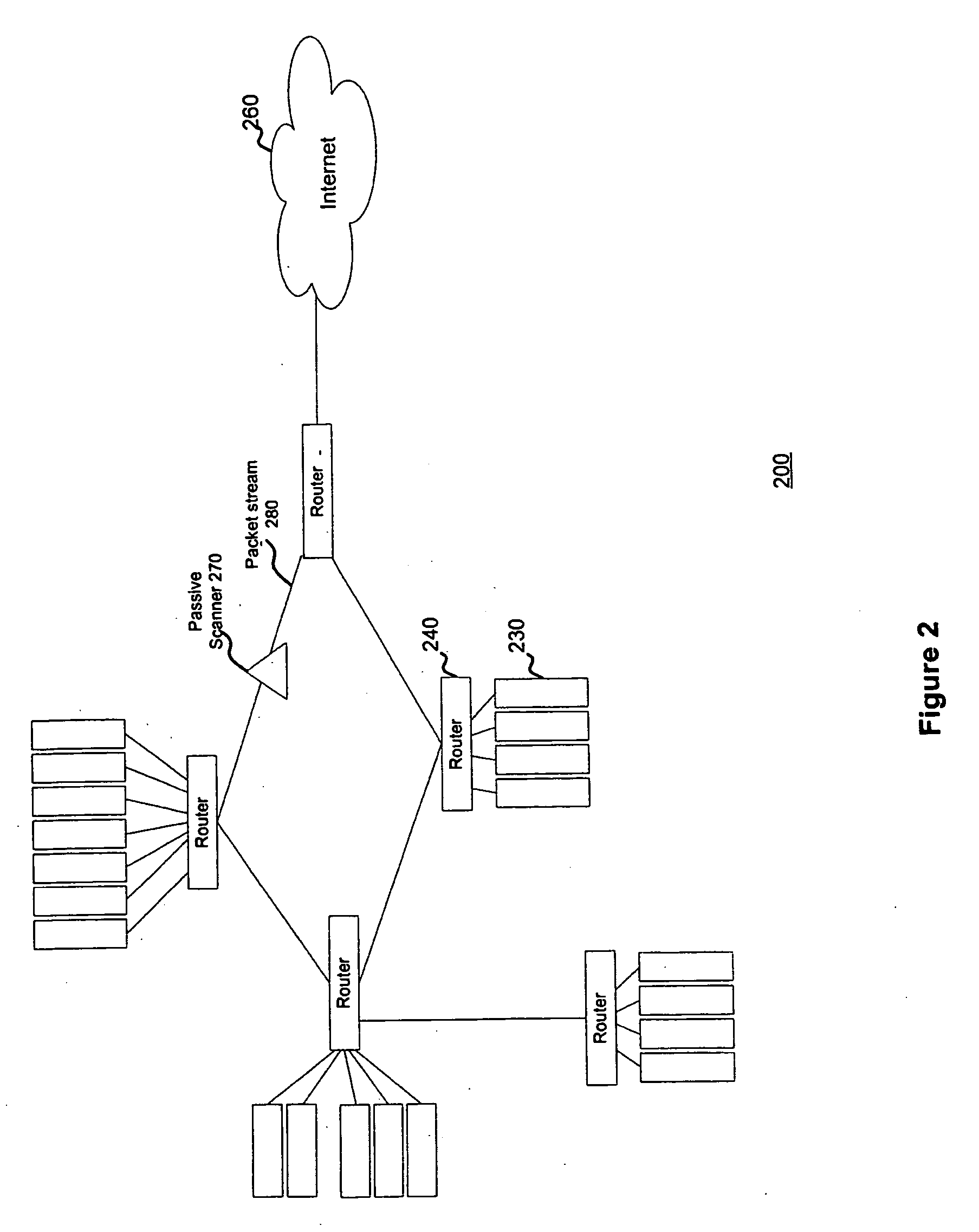System and method for scanning a network
a network and network scanning technology, applied in the field of network security, can solve the problems of slow both methods, long scanning time, and particularly slow manual inspection
- Summary
- Abstract
- Description
- Claims
- Application Information
AI Technical Summary
Benefits of technology
Problems solved by technology
Method used
Image
Examples
Embodiment Construction
[0028] The present invention provides a passive network scanner for creating a network model of active hosts and services on a network and analyzing vulnerabilities in the client and / or server machines or applications it observes. The scanner in real-time continuously looks for ports and hosts which may indicate change on a network, as well as new vulnerabilities. When a network model update or vulnerability is observed, it may be reported immediately or on another periodic basis requested by a user.
[0029]FIG. 2 is a schematic diagram of a network using a passive scanner according to a first preferred embodiment of the present invention. System 200 includes a host 230, a router 240, Internet 260, a passive scanner 270 and a packet stream 280.
[0030] In a preferred embodiment of the invention, passive scanner 270 comprises a piece of software loaded onto a laptop, computer system or server. To perform effectively, passive scanner 270 must see as many network sessions as possible for...
PUM
 Login to View More
Login to View More Abstract
Description
Claims
Application Information
 Login to View More
Login to View More - R&D
- Intellectual Property
- Life Sciences
- Materials
- Tech Scout
- Unparalleled Data Quality
- Higher Quality Content
- 60% Fewer Hallucinations
Browse by: Latest US Patents, China's latest patents, Technical Efficacy Thesaurus, Application Domain, Technology Topic, Popular Technical Reports.
© 2025 PatSnap. All rights reserved.Legal|Privacy policy|Modern Slavery Act Transparency Statement|Sitemap|About US| Contact US: help@patsnap.com



